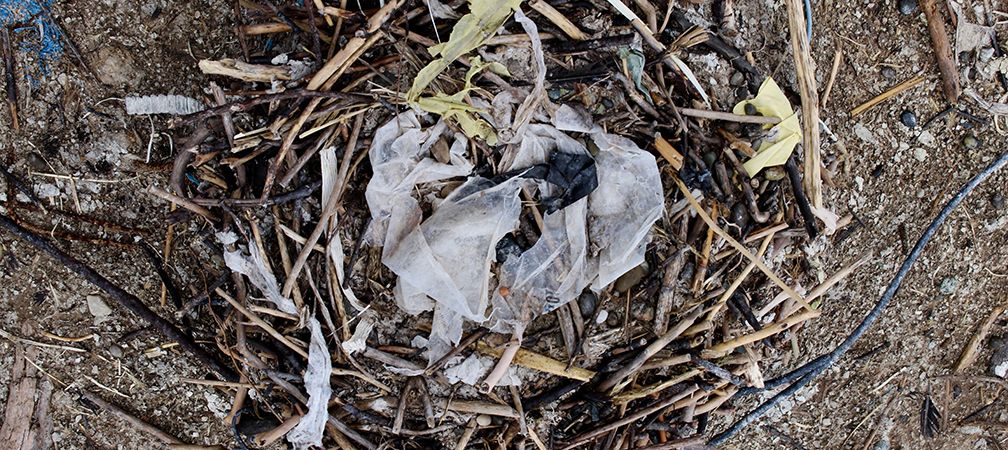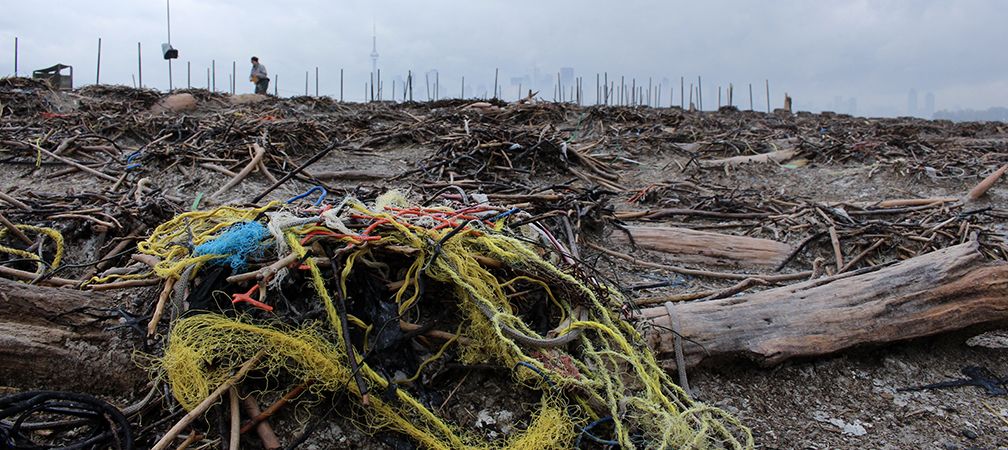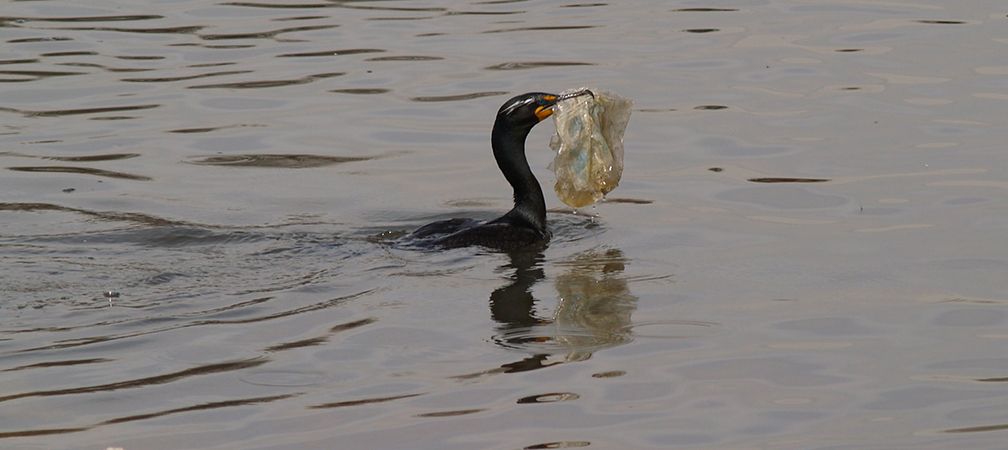Ontario Nature Blog
Receive email alerts about breaking conservation
and environmental news.
© Lora Denis
Display of 80 anthropogenic debris pieces found in a single nest © Melina Damian
When you think of a bird’s nest, what’s the first image that comes to mind? Probably a bunch of sticks and leaves bundled together – right? Unfortunately, for birds that live in urbanized areas, they often use anthropogenic debris (otherwise known as garbage) to build their nests. This can result in entanglement or ingestion and presents a growing problem for birds – including many native species.

Plastics make up most of the anthropogenic debris found in the natural environment and can take hundreds of years to break down. Most research on birds and plastic pollution has been documented in marine environments. However, data from freshwater ecosystems – like the Great Lakes – remains limited. So, ecologist Dr. Gail Fraser and I set out to investigate this issue as it pertains to double-crested cormorants at Tommy Thompson Park in Toronto.

Tommy Thompson Park, a human-made peninsula on the shorelines of Lake Ontario, hosts one of the largest breeding colony of double-crested cormorants in North America, and it’s designated as an Important Bird Area. We conducted a research study to assess cormorant ground nests for the presence of debris, and we found that all fifty nests sampled were polluted.
We retrieved more than 1,400 debris items from the nests. The top five materials we found were soft plastic, followed by metal, electrical wire, packaging material, and straws (42 of them, to be precise). The most unusual items we found were a pair of sunglasses, a deflated balloon and a dog’s poop bag.

Various bird species have been used as ecological indicators for plastic pollution in the environment. In our study, we looked at community science data from the Great Canadian Shoreline Cleanup available for the site to assess whether it matched our findings. Interestingly, both datasets differed slightly, which indicates that cormorant nests at Tommy Thompson Park should not be used as ecological indicators. This was likely a result of the nature of the site, which was once used as a dumping ground for construction waste. However, we do recommend monitoring other cormorant colonies in Lake Ontario.
It was difficult to witness the amount of pollution at the nesting site. I couldn’t help but wonder what it must feel like for a bird (or a baby bird) to die slowly from getting caught in, or eating plastics. A recent study analyzed the stomach contents of double-crested cormorant colonies in both Lake Ontario and Lake Erie, and found alarming levels of debris ingestion. It is not only cormorants that are being affected; almost 800 species globally have been negatively impacted by plastic pollution. This growing trend needs to be halted.
The good news, however, is that the federal government is planning to phase out six types of single use plastics by the end of 2021, joining a growing list of 170 nations that have already pledged to significantly reduce their use by 2040. Also, Toronto is striving to become the first City in Ontario to have a circular economy, and Ports Toronto’s initiative to deploy “seabins” (floating devices that clean-up debris from the water surface) is definitely a step in the right direction. But will it be enough?
In addition to strong regulations and holding plastic producers accountable, we as consumers can drive up change by having sustainable habits. Personally, one way I greatly reduced the amount of plastic waste I was producing was by giving up bottled water. Of course, I’m privileged to live in a city where tap water is tested every six hours to maintain safety standards, and I know not all communities have access to clean drinking water, but there are a myriad of other ways we can reduce our plastic waste. Citizens can also take action by joining litter cleanup organizations, like A Greener Future, or participating in government consultations.

Gananoque Lake Nature Reserve © Smera Sukumar